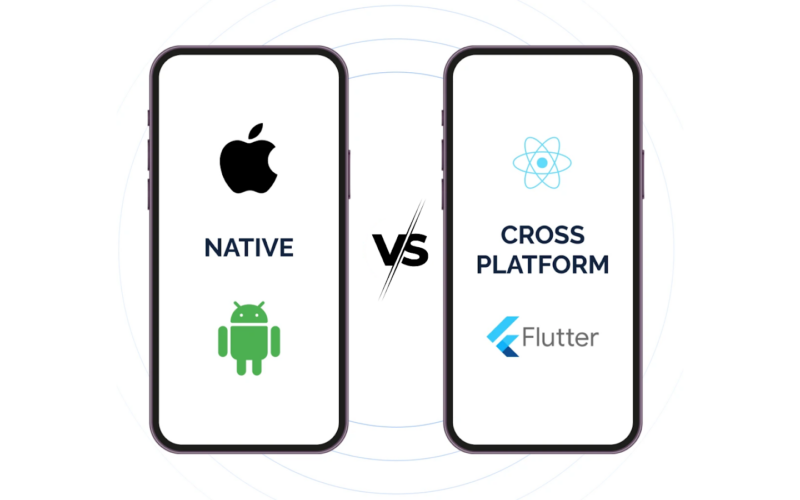Australia’s data analytics market was valued at AUD 2.00 billion in 2024 and is forecast to grow at a compound annual growth rate of 25.30 % from 2025 to 2034, potentially reaching AUD 19.08 billion by 2034. This level of growth signals a major shift in how Australian businesses are approaching strategic decision making. Whether you lead product, operations, or digital transformation, data is no longer a support tool. It is a foundation for forecasting demand, measuring impact, and finding efficiencies. But to turn raw data into actionable insights, you need more than dashboards. You need clarity around what data matters, where it lives, how it flows across systems, and how teams are empowered to act on it.
This guide will help you build that clarity. We will cover key stages in a modern data journey from collection to culture. You will see what works in the Australian business environment and how leading teams are moving from scattered data to sustained innovation.
Why Data-Driven Decisions Matters for Australian Businesses
In a market shaped by tight competition, shifting regulations, and tech-savvy customers, instinct-led decisions are no longer enough. Australian businesses are turning to data analytics to validate assumptions, optimise operations, and respond faster to change.
Here’s how data-driven thinking translates into tangible outcomes across industries in Australia:
- Retail: Supermarkets and ecommerce platforms use behavioural and purchase data to improve inventory planning, personalise offers, and reduce cart abandonment.
- Healthcare: Providers analyse patient flows and clinical outcomes to optimise appointment scheduling, resource allocation, and care pathways.
- Finance: Banks and fintechs track transaction data in real time to improve credit scoring, detect fraud, and deliver personalised financial products.
- Agriculture: Farmers and agritech firms use weather, soil, and yield data to improve precision farming and reduce input waste.
- Public Sector: Councils and government agencies rely on data to improve citizen services, predict infrastructure needs, and report transparently on performance.
In Australia, the value of data is not just in insights but in action. Businesses that embed analytics into decision loops can iterate faster, reduce risks, and drive higher ROI on tech and talent investments.
Also read: AI for Data Analysis: Benefits and Future Trends
Stages of a Data-Driven Business Transformation
In Australia, becoming a data-driven organisation is not just about adopting dashboards or predictive models. It’s a company-wide transformation that touches people, processes, and platforms. Businesses are shifting from isolated data use to organisation-wide intelligence where everyone from marketing to operations uses analytics to make faster, smarter decisions.
Here’s what this journey typically looks like for Australian organisations:
1. Prioritising the Right Data from Trusted Local Sources
When your data is aligned with business goals, every insight is more actionable.
Key sources include:
- Customer behaviour across web, mobile, and stores
- ERP and CRM data for finance, support, and operations
- Australian Bureau of Statistics (ABS), ATO, and logistics feeds
- Industry-specific inputs like weather or geospatial data
Business outcomes:
- Faster decisions with more relevant metrics
- Higher ROI from campaigns and programs
- Stronger compliance alignment from day one
2. Centralising and Cleaning the Data
Unified data builds trust across teams and reduces wasted time in reconciling reports.
Common platforms in Australia:
- Data warehousing with BigQuery, Snowflake, or Azure Synapse
- Local cloud hosting via AWS Sydney or GCP Melbourne
- Real-time ETL with tools like Fivetran or Matillion
Business outcomes:
- Faster month-end close cycles
- Consistent metrics across departments
3. Making Data Accessible Across Teams
When non-technical teams can access the right data, insights drive daily execution—not just quarterly reviews.
How it’s done:
- BI tools like Power BI, Tableau, and Looker
- Embedded dashboards in CRMs or apps
- Role-specific KPIs tailored for teams
Business outcomes:
- More self-sufficient teams and fewer data support tickets
- Faster decisions in sales, product, and marketing
- Data becomes part of daily rituals, not just leadership decks
4. Embedding Analytics Into Daily Operations
Data should inform how teams operate, not just what they report.
Cultural practices that work:
- Starting meetings with KPI and customer insights
- Using A/B testing by default in product or marketing
- Appointing data champions in each business unit
Business outcomes:
- Shorter feedback loops and faster iteration
- Better alignment between teams through shared metrics
- Higher accountability tied to data, not opinion
5. Scaling with Predictive and Prescriptive Analytics
Once foundational data practices are in place, advanced analytics deliver future-ready decisions.
Use cases seen in Australia:
- Retail: Stock forecasting based on seasonal and regional trends
- SaaS: Predicting customer churn and upsell potential
- Energy and utilities: Reducing equipment downtime through predictive maintenance
- Finance: Dynamic credit scoring and fraud detection
Business outcomes:
- Reduced churn and higher LTV
- Better resource planning across supply chains
- Proactive decisions that reduce risk and cost
Also read: How to Create an Effective Data Analytics Strategy in Simple Steps
Key Data Analytics Tools Used by Businesses
Australian organisations are increasingly choosing analytics platforms that balance ease of use, scalability, and compliance with local data regulations. The tools vary based on company size, industry, and the kind of insights needed. Below are categories of tools and their top Australian adoption examples.
1. Business Intelligence (BI) Platforms
These tools help non-technical users explore trends, track KPIs, and build visual dashboards.
| Tool | Why It’s Popular in Australia |
| Power BI | Tight Microsoft ecosystem integration; widely used in healthcare, education, and government. |
| Tableau | Strong visual storytelling and data blending, used by banks and logistics firms. |
| Looker (Google Cloud) | Preferred by startups and SaaS companies for embedded analytics. |
2. Cloud Data Warehouses
To store and query large volumes of structured data with low latency and high uptime.
| Tool | Key Use Cases in Australia |
| BigQuery | Favoured in retail and ecommerce for high-volume user behavior analytics. |
| Snowflake | Chosen for cross-region scalability and strong role-based access control. |
| Azure Synapse | Used by public institutions needing alignment with Australian data residency standards. |
3. Data Engineering & ETL
These tools handle transformation, loading, and syncs between data sources and dashboards.
| Tool | Local Usage Highlights |
| Fivetran | Popular with SMEs using Shopify, Salesforce, and Xero. |
| Matillion | Often deployed by mid-market companies needing SQL-friendly workflows. |
| Apache Airflow | Adopted in mining, energy, and large-scale infrastructure for custom pipelines. |
4. Predictive & Advanced Analytics
Used to train and deploy ML models for forecasting, scoring, and automation.
| Tool | Adoption Notes |
| AWS SageMaker | Used in agriculture and fintech for custom ML models. |
| DataRobot | Gaining traction in insurance and utilities for autoML use cases. |
| Vertex AI (Google Cloud) | Preferred in media, gaming, and digital product companies. |
Challenges Businesses Face with Data Adoption
While analytics tools and use cases are maturing fast in Australia, many organisations still face structural and operational barriers to becoming truly data-driven. These challenges are less about the technology and more about readiness, culture, and execution.
1. Data Quality and Fragmentation
Most Australian businesses operate across multiple systems; legacy CRMs, cloud ERPs, marketing platforms, and on-prem finance tools. This results in inconsistent formats, duplicate entries, and siloed records. Poor data quality leads to misleading dashboards and erodes trust in analytics outputs.
2. Lack of Internal Data Skills
Although cloud platforms simplify access to AI and ML, interpreting insights still requires skilled analysts, data engineers, and domain experts. Many SMEs in Australia lack in-house analytics teams or rely on stretched IT resources that can’t fully support business users.
3. Compliance and Data Governance
Regulations like the Privacy Act and the upcoming Privacy Legislation Amendment (2025) impose stricter rules on how personal and behavioural data is handled. Without clear data lineage and consent tracking, businesses risk non-compliance and legal exposure.
4. Low Analytics Utilisation by Business Teams
Many Australian companies invest in dashboards but fail to drive adoption. This is often due to a mismatch between reports and real decision workflows. Data ends up being a reporting layer, not a daily operational input.
5. Cost of Real-Time Infrastructure
For organisations aiming to shift from monthly reporting to real-time insights, the cost of streaming data pipelines, continuous cloud compute, and managed orchestration often exceeds expectations especially when business outcomes aren’t clearly mapped beforehand.
Are you missing out on exploiting Data, Analytics & AI to gain a competitive edge? Talk to us!
Future Trends in Data Analytics in the Business Context
As data maturity improves across sectors, Australian businesses are entering a new phase where analytics becomes a continuous, automated, and value-generating engine rather than a reactive reporting layer. These trends are set to define how organisations plan, compete, and grow over the next five years.
1. AI-Augmented Decision Making Will Become the Norm
Analytics platforms are evolving from descriptive dashboards to real-time, AI-powered recommendations. Australian businesses are already integrating GenAI and ML models to:
- Automate financial forecasting and demand planning
- Generate insights from unstructured data (emails, forms, voice)
- Surface hidden opportunities or risks without manual queries
2. Demand for Real-Time, Contextual Analytics Will Accelerate
Australian organisations are moving toward streaming data pipelines and event-based architecture to support faster, more contextual decision-making. Use cases include:
- Dynamic pricing in ecommerce
- Instant fraud detection in fintech
- Predictive routing in logistics
3. Privacy-First Data Architectures Will Become Mandatory
With the upcoming Privacy Legislation Amendment (2025) in Australia, data collection, sharing, and usage must meet stricter transparency and consent requirements. This is pushing businesses to:
- Rebuild pipelines with consent management baked in
- Minimise PII processing by default
- Implement stronger role-based access and auditing
4. Cross-Functional Data Roles Will Replace Traditional BI Silos
Organisations will prioritise data fluency across roles rather than isolate analytics in IT or BI teams. Expect to see:
- “Analytics translators” bridging business and data science
- Self-service tools embedded into workflows
- Training programs for marketers, product leads, and operations
5. Sustainability and ESG Analytics Will Gain Executive Priority
With growing investor, regulatory, and consumer scrutiny, ESG analytics is becoming core to business reporting. Australian companies are:
- Integrating carbon footprint tracking into operations
- Using predictive analytics for environmental impact scenarios
- Publishing data-backed sustainability performance in investor decks
This is particularly relevant for sectors like mining, energy, and retail, where compliance and transparency are under close watch from regulators and the public.
How Codewave Enables Data-Led Growth
Codewave works with Australian teams to go beyond dashboards; building modern data foundations that improve visibility, speed up decisions, and drive measurable business impact. From audits to GenAI integration, every phase is tailored to your use case, compliance needs, and growth stage.
1. Data Audit and Opportunity Mapping
Start by understanding what data already exists, what’s missing, and what aligns with key metrics like customer retention, cost per acquisition, or inventory velocity.
Business outcome: Gain clarity on current gaps, discover high-impact data opportunities, and align internal metrics with external goals.
2. Scalable, Compliant Data Architecture
Deploy cloud-native platforms like BigQuery, Snowflake, or Azure Synapse; configured for Australian data residency and governance requirements. Architectures are built for scale, auditability, and interoperability with CRM, ERP, and BI tools.
Business outcome: Reduce latency, improve reliability, and future-proof infrastructure for advanced analytics.
3. Governance-Ready Systems for Privacy Compliance
Embed role-based access controls, data lineage tracking, and retention policies from the outset. Ensure alignment with Privacy Act 1988 and the 2025 Privacy Amendment Bill especially critical in finance, healthcare, and education sectors.
Business outcome: Reduce regulatory risk, protect sensitive customer data, and accelerate security audits.
4. Self-Service Dashboards and Embedded Insights
Enable product managers, marketers, finance, and support teams to explore real-time data through intuitive dashboards. Popular tools include Power BI, Looker, Tableau; integrated into internal systems and customer-facing platforms.
Business outcome: Reduce analytics bottlenecks and empower faster decisions across non-technical teams.
5. Predictive Models and GenAI Integration
Move beyond descriptive analytics with tailored machine learning models and GenAI integrations. Common use cases include churn prediction, lead scoring, personalised product recommendations, and operational forecasting. Explore our AI & ML Capabilities
Business outcome: Proactively identify risks, personalise user experiences, and unlock new sources of revenue.
6. Post-Launch Optimisation and Analytics Maturity
Stay aligned with business goals through ongoing support, performance tuning, and roadmap planning. This includes KPI tracking, tool updates, user training, and scaling infrastructure as data needs evolve.
Business outcome: Maintain high data trust, evolve analytics with growth, and continuously improve decision quality.
See how data strategies have helped companies across retail, finance, health, logistics, and public services drive smarter decisions and lasting results. Explore Full Portfolio
Need to Accelerate Data ROI? Get expert guidance on aligning data architecture, tools, and teams with your business goals. Book a Data Strategy Session!
Frequently Asked Questions
Q: How is Business Analytics used in Australia?
Ans: Australian businesses use analytics to optimise operations, personalise customer engagement, forecast market trends, and meet regulatory reporting requirements. In sectors like retail, healthcare, and logistics, analytics helps leaders make real-time decisions that reduce costs and drive growth.
Q: What is the purpose of data analysis in a business context?
Ans: The purpose of data analysis is to convert raw data into actionable insights that inform strategic choices. In business, this means identifying patterns, forecasting performance, evaluating ROI, and improving outcomes across departments like sales, operations, and customer service.
Q: Is data analytics in demand in Australia?
Ans: Yes. Data analytics is one of the fastest-growing areas of demand in Australia. Businesses across finance, health, public sector, and agriculture are investing in data talent and platforms to stay competitive and compliant. The sector is expected to grow significantly through 2034.
Q: What is the business context in Business Analytics?
Ans: The business context refers to how data is interpreted relative to an organisation’s goals, market, and operating conditions. For example, a retail chain may track foot traffic and basket size, while a logistics company focuses on delivery time and fuel cost data.
Q: What is the primary role of a data analyst in a business context?
Ans: A data analyst’s primary role is to extract, clean, and interpret data to help business leaders make informed decisions. In Australia, this often includes creating dashboards, automating reports, performing ad hoc analysis, and supporting teams with real-time performance insights.
Q: What are the 4 components of business analytics?
Ans: The four components are:
- Descriptive analytics – understanding what has happened
- Diagnostic analytics – analysing why it happened
- Predictive analytics – forecasting future trends
- Prescriptive analytics – recommending actions based on data
These components guide strategic planning, operational efficiency, and customer-centric innovation.
Codewave is a UX first design thinking & digital transformation services company, designing & engineering innovative mobile apps, cloud, & edge solutions.







